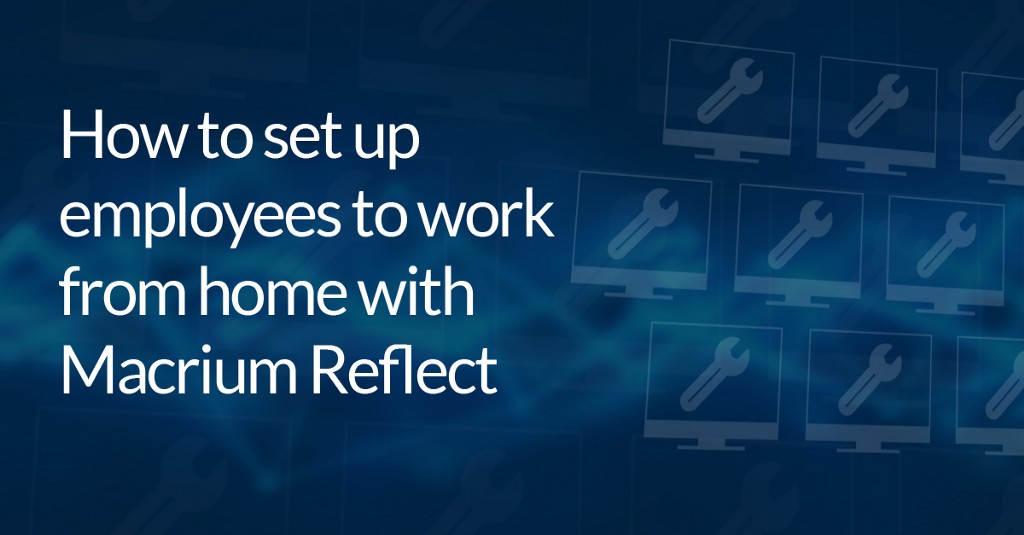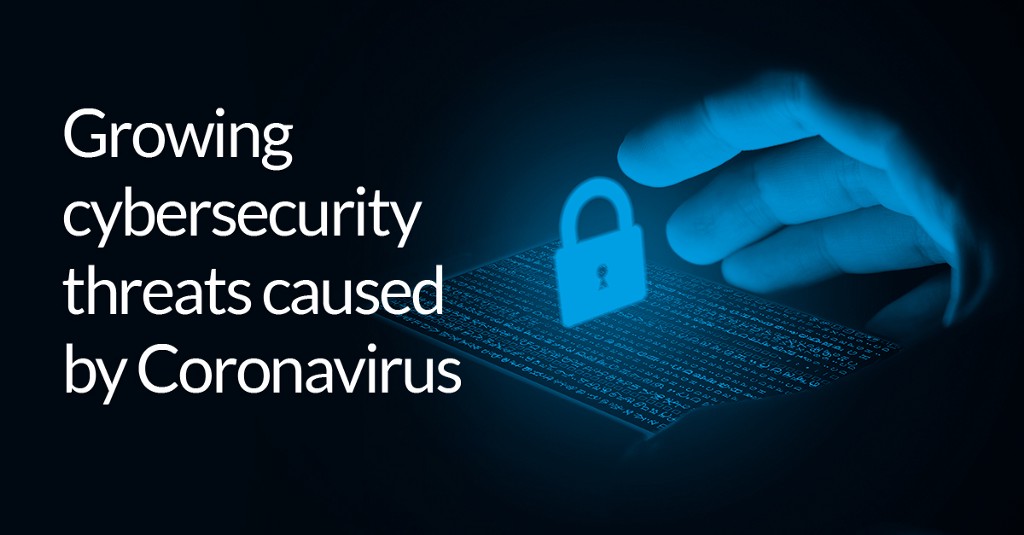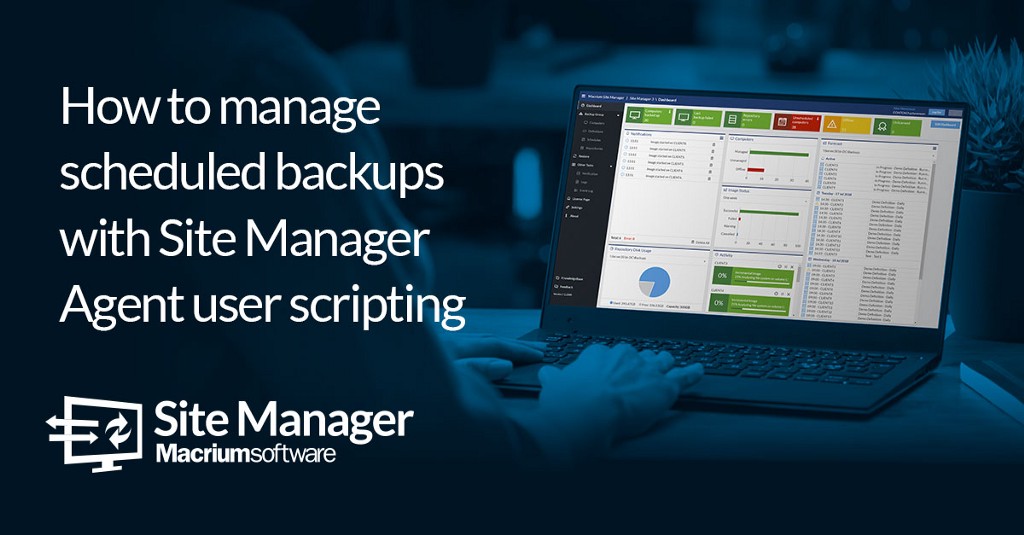Here’s how you can to set up employees to work from home securely during the COVID-19 crisis

How to set up employees to work from home securely with Macrium Reflect Deployment Kit
In our last few blog posts, we’ve spoken directly and honestly about some of the challenges we’re all facing in the time of massive upheaval and uncertainty. We know we’re not the only ones — just about every company on the planet has had to talk about the impact of COVID-19 on their customers’ lives.
However, it’s easy to fall into the trap of repeating the usual truisms without being helpful. In this post we’ll make your current challenges just a little bit easier with some practical advice on how you can use Macrium Reflect’s family of products to help set up your employees to work safely and productively at home.
We touched on this in How Macrium can help protect your team while working from home, but this time we’ll go into more detail to show you how to actually get up and running.
Creating and deploying images with Macrium Deployment Kit
If you’re responsible for managing multiple desktop instances and want to be able to deploy and replicate a specific image across several machines, Macrium Deployment Kit is a really helpful tool.
In the context of the current situation, if you have tens — or maybe even hundreds — of employees starting to work from home, managing the chaos of as many unique desktop setups (which, of course, all present their own individual security risks) is an essential task.
There are a number of different ways you could go about this, and ultimately depends on what works for you and for your employees. For example, you could simply image each individual workstation for the purpose of restoring those images to new workstations that can be used remotely. Alternatively, you could set up a fresh new environment that is installed across all workstations.
On the one hand a fresh environment might be easier for you — all you’ll need to do is create one “master image.” However, users will not have everything they’re used to on their desktop environment.
Another further option is to deploy an image to a hypervisor — all the resources available inside that image will then be accessible via virtual machines that run on end user devices at home.
How does Macrium Deployment Kit work?
The key feature of the deployment kit is that it allows you to create a portable application that can be launched from a media of your choice. This means that you could launch Reflect from a USB stick, or other media without the need to install an application on a server or workstation that you would like to backup.
Setting up your portable application
The first step is simply to create the portable application using the Rescue Media Builder.
To do this, follow these steps:
- Insert the USB stick or other supported media you wish to use
- Launch Macrium Reflect interface and select Other Tasks
- Click Create Rescue Media to open the Rescue Media Builder
You’re now in the Rescue Media wizard — the first step here is to make sure you select the correct media you would like to use, then:
4. Tick Enable Multi Boot (MBR/UEFI) and Create Portable Technician’s Rescue Media
5. Click Finish — you’ll need to be patient as setup takes a few minutes here
Once this is done, the media of your choice will be renamed to ‘Macrium Technician’s Media’ in Windows Explorer.
Setting up your ‘master machine’
You can now set up your ‘master machine’ with the required operating system and settings.
If you’re deploying a single master image, then before you go any further you’ll need to ‘Sysprep’ the machine that you want to image with the Reflect Deployment Kit. Sysprep is a Windows tool for duplicating and testing new deployments.
You can find sysprep in the system32 folder — this generalizes the Windows installation.
Creating a system image
Now, let’s continue:
6. Boot the machine into the rescue environment from the Technician’s Rescue Media. Create a ‘master image’ of the machine and then save it to a local or network location of your choice.
7. You can now eject the media and then go to the machine on which you want to deploy your ‘master image’.
8. Insert the Rescue Media and boot up the new machine into the Rescue Environment and restore your ‘master image’.
That’s pretty much it. There are a couple of problems you might run into that you should be aware of:
- The hardware on which the ‘master image’ was created is different from the target machine. In this scenario, Macrium ReDeploy can help you out. ReDeploy allows the new hardware to be detected and the configuration will be modified to allow it to successfully boot.
- The target hardware doesn’t have a matching booting mode (BIOS or UEFI). If your disk image is MBR, your BIOS needs to be configured for MBR LEGACY boot, and the Rescue Media will need to be booted in LEGACY mode. If your disk image is GPT, your UEFI BIOS will need to be configured to boot via UEFI, and the Rescue Media will need to be booted using UEFI as well.
Note: You can find out if your image or clone is MBR or GPT by looking at the image header in Reflect. The first line on the disk image/clone in Reflect will state if it is MBR or GPT.
If you need to set up a whole fleet of workstations, just repeat this process. If that sounds like a lot of manual work, with a Deployment Kit license, you can create an unlimited number of 5 USB sticks for 5 individual technicians to use. This means software can be deployed across multiple workstations much faster.
Reversing the process
It’s impossible to say how long this situation will last, but when employees finally return to the office, you can also reverse the process using the Deployment Kit. All you’d need to do is gather the images from employees’ home workstations and restore them back to office machines.
If employees have been actively creating images of the systems they use at home — using Macrium Workstation, for example — those images can be restored to their office machines when they return. This means that the work they accumulated at home can be transferred to their office workstation at ease
Learn more about Macrium Workstation.
Good luck!
Deployment Kit is a useful tool for IT technicians, but it’s only one piece of the puzzle. However you decide to approach managing and guiding employees throughout this difficult time, it remains essential that communication is clear and consistent. Working remotely can be a lonely experience for employees, so making sure they know you have their backs is incredibly valuable.
And, aside from that, remember to stay vigilant. IT isn’t, after all, just about setting up and letting things run — it’s about managing things effectively in the long term.


